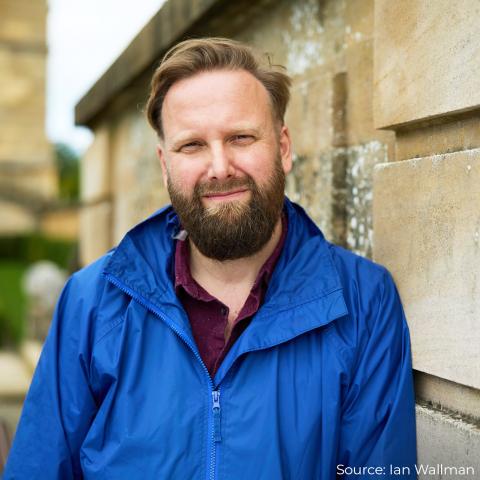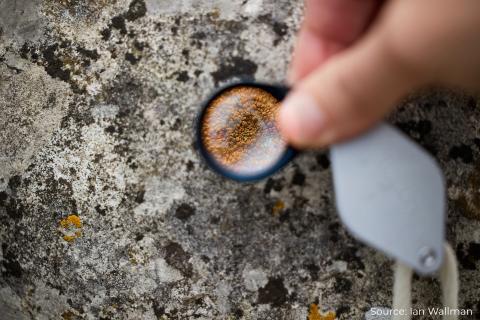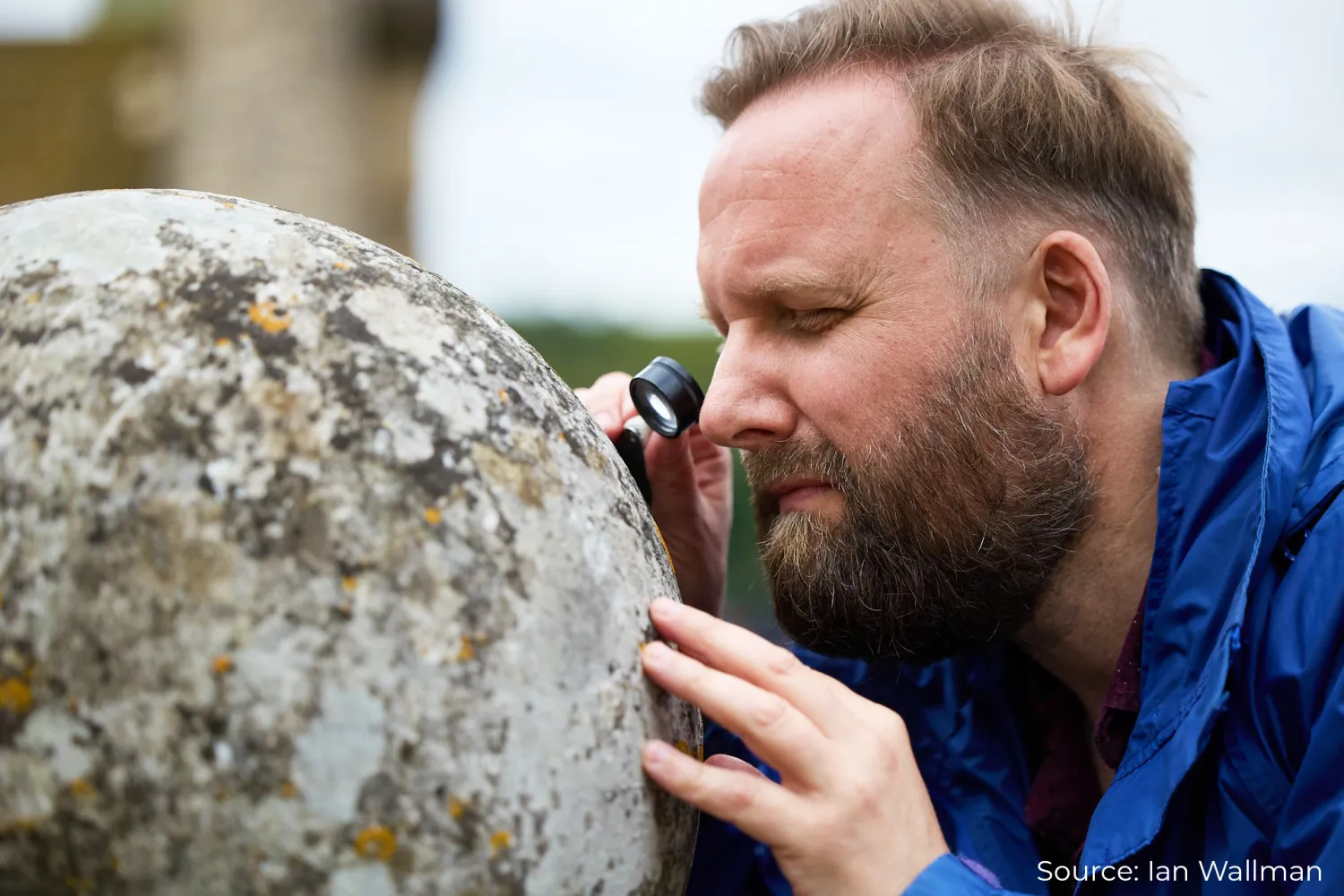Breadcrumb
Under the lens: a local landmark’s living stone
Something you might have missed on your latest trip to Blenheim Palace is the rich tapestry of lichens that covers the building’s façades and stone features. What implications do these organisms have for the palace as a World Heritage Site and for its conservation? This is the subject of recent research by Dr Nicholas Carter, Lecturer in Physical Geography at Christ Church, and answered in a new report commissioned by the palace.
Blenheim Palace and the University of Oxford are partnering on a data-led approach to restoring the 300-year-old building. The palace is currently halfway through a 10-year £40m restoration programme, forming the start of what is likely to be a 20-year £80m programme, depending on what is revealed by the current project.

One of the questions the partnership hopes to answer is whether the lichens found on the stonework have a protective or deteriorative effect – a matter which falls within Dr Carter’s expertise. To do this, he has been working to establish which lichens are growing on the palace walls, and from this he has been able to advise on whether and where any issues of biodeterioration are developing, or are likely to develop in the future.
The more time we spend with lichens, the more they reveal their artistry, their uniqueness and their tales.
The more time we spend with lichens, the more they reveal their artistry, their uniqueness and their tales.
Part of Blenheim Palace’s mission as a World Heritage Site is to understand, protect and enhance its ecological value, and examining the biodiversity of the lichens at the palace contributes to this project. Excitingly, Dr Carter’s research led to the discovery of a relatively rare British lichen Phaeospora parasitica at the site. The individual found was the first to be recorded in Oxfordshire. But the conversations with the palace have not ended there. Dr Carter has also discussed the contribution lichens make to the aesthetic appeal of the buildings and has been keen to highlight the place of lichens in our broader cultural heritage.

‘The lichens living on the façade of Blenheim Palace have a fascinating ecological and cultural history and play an important role in its conservation, contributing to Blenheim’s status as a World Heritage Site as well as the wider ecosystem,’ said Dr Carter when summarising his findings.
‘The more time we spend with lichens, the more they reveal their artistry, their uniqueness and their tales.’
When asked about his working relationship with the palace, Dr Carter could not help but… liken it to lichens themselves: ‘Lichens are a coming together of several different organisms in what is known as a symbiotic relationship to create a single living thing, or perhaps some form of ecosystem. It’s a relationship that benefits all the separate parts that make it, and in that sense they’re really good metaphors for the connections us researchers in the University of Oxford have made with the Blenheim team. Connections that have enabled us to develop new ideas and to tell the story of the lichens there.’
If you want to find out more, including how lichens once influenced the outcome of a famous war, read Dr Carter’s report via the Blenheim website.
Nicholas Carter is a Lecturer in Physical Geography at Christ Church. His research centres on the two-way interactions between organisms and the physical environment, especially in the fields of rock and stone weathering, landscape evolution and architectural heritage conservation in locations such as Thailand, India and the UK. Learn more about his research and academic background via his Christ Church profile.
Other Christ Church news



